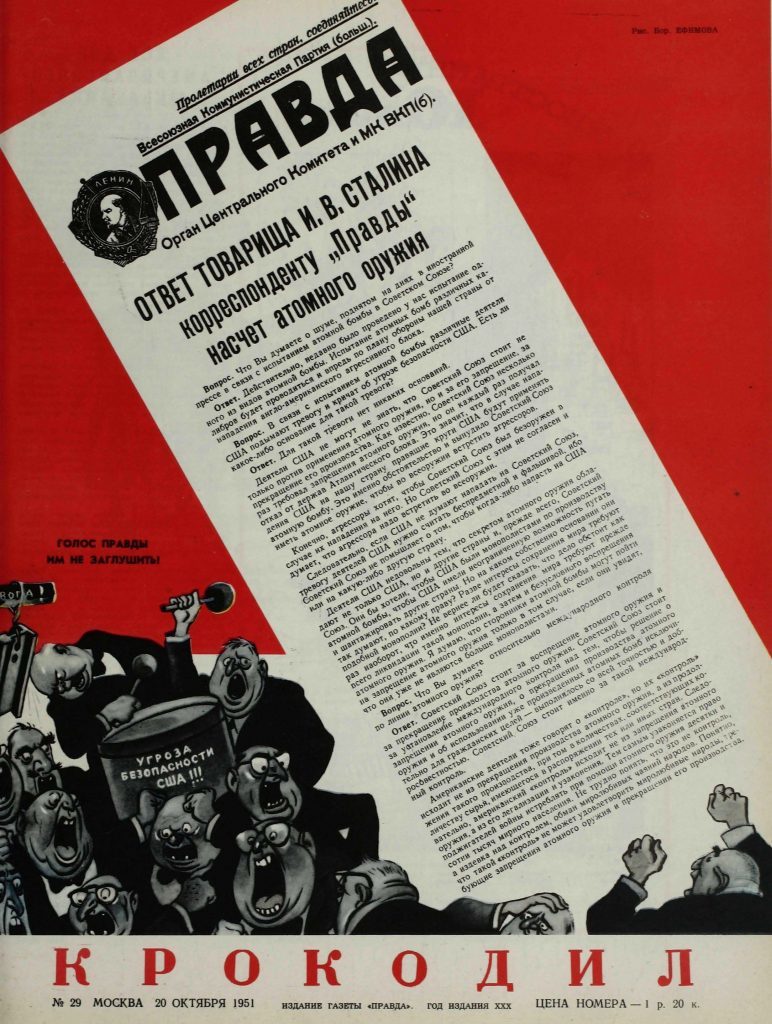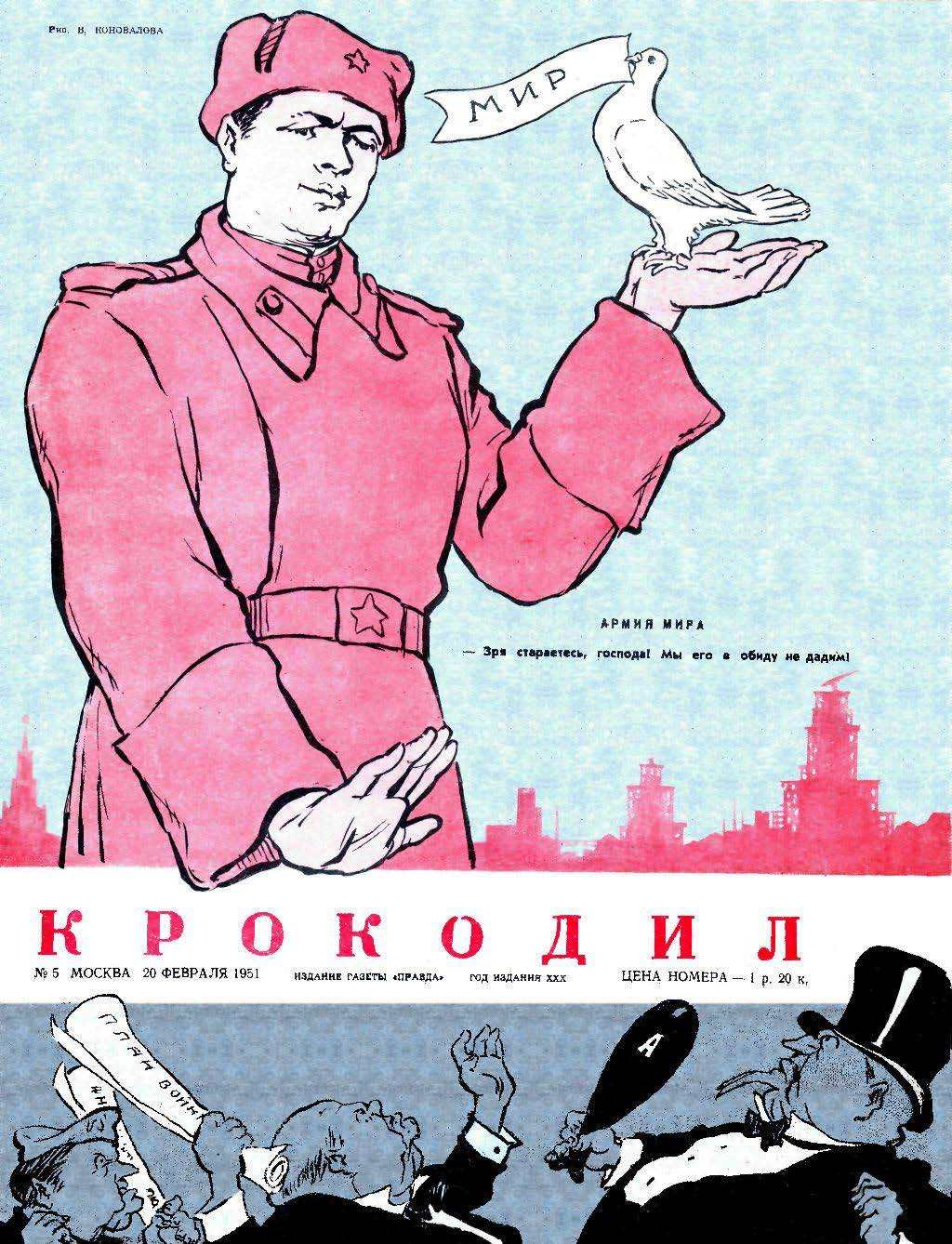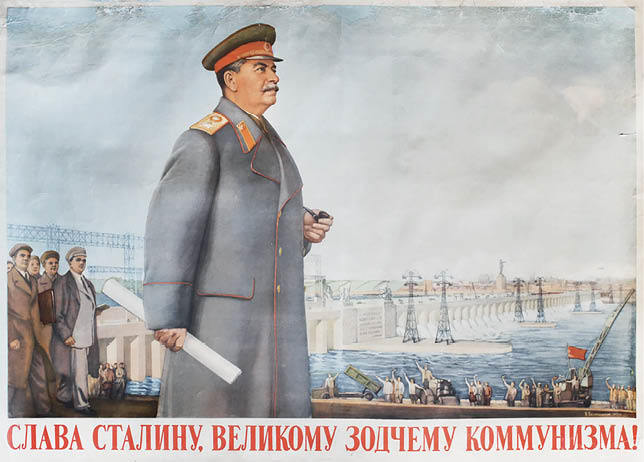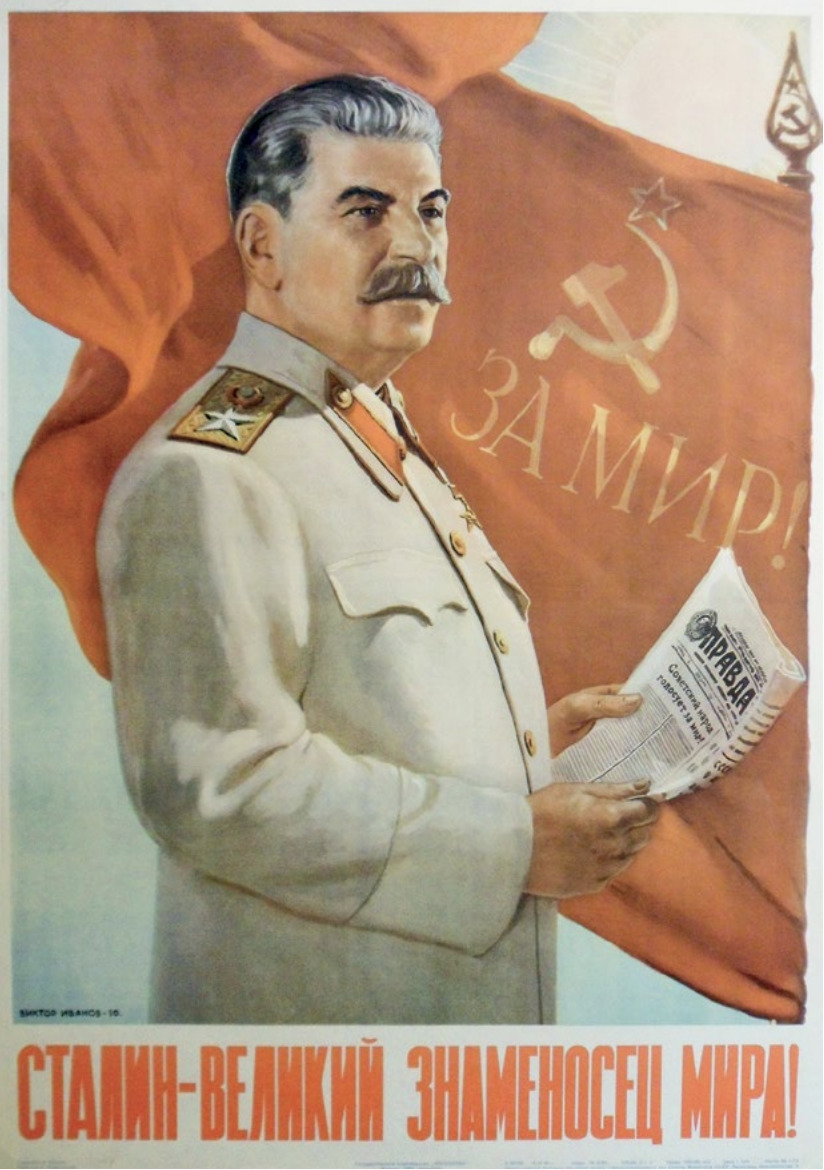1950s Propaganda
The Campaign for Peace
One of the defining propaganda campaigns of the 1950s was to demonstrate and defend the Soviet Union by portraying itself as a peaceful state. Reflecting Soviet foreign policy in the post World War II era, propaganda was issued to reflect the government’s “Struggle for Peace in All the World” (Johnston 2008, 259). Archival records of Pravda reflect the ongoing “struggle for peace” and such examples of propaganda were essential for the Soviet Union to reframe themselves to the outside world, specifically to the West, and contrast themselves against the capitalist “warmongers” (Johnston 2008, 260). However, the 1950s propaganda peace campaign was also used to influence its own citizens who had been “duped into accepting a harsh post-war settlement in return for the promise of peace” (Johnston 2008, 260). The Soviet government weaponized peace propaganda through Pravda to inform their citizens of the need for strength (through accumulation of nuclear weaponry) to protect themselves against the violent Western-capitalists, but also to pressure its citizens into becoming the Ideal Soviet Citizen who “labor for peace” and ensure the strength of the USSR (Johnston 2008, 261). As the Korean War broke out in 1950, soviet propaganda in Pravda publications began to contrast the evil interventionist-Americans contributing mass executions in Korea to the mighty, but peaceful, Soviets (Johnston 2008, 262).
The Goals of the Peace Campaign
Externally:
- To paralyze or check the collective means of the democracies for strengthening their own defenses
- To embarass the reception of war budgets and thus weaken the potential for war with future adversaries
- To undermine moral unity of democratic nations
Domestically:
- To justify to their own people the tremendous expenditure on war
- To force their own people to still greater sacrifice and deprivations
- To deceive them by transferring the whole blame on to the pretended warmongers
Source: "The Soviet Peace Campaign.” The Australian Quarterly 24, no. 2 (1952): 16–20. http://www.jstor.org/stable/41317668.
There was more to the Peace Campaign than just listing various goals - they needed to be achieved by the USSR before their citizens form different opinions about war and weaponry. To execute these goals, the government mobilized writers, artists, academics, and composers to create professional propaganda ("The Soviet Peace Campaign" 1952, 16).
Examples of Peace Campaign Propaganda
How Soviet Citizens Responded:
It is often believed that Soviet citizens were passive, naive individuals who fell for government propaganda and succombed to being followers of the Communist agenda instead of being independent thinkers. However, this was not always the case. In the Peace Campaign, Soviet citizens engaged in the struggle for peace as a way to voice "personal grief" from World War II, and to amplify their pacifist sentiments (Johnston 2008, 259).
Pravda informed its readers that the paper had been receiving letters of thanks from people around the globe as the USSR spearheaded the struggle for worldwide peace and civility (Johston 2008, 263). This led to a rise in the number of petition campagins in the 1950s as agitators demonstrated slogans such as "Peace in All the World" while military parades showed off Soviet strength (Johnston 2008, 266). Individuals were willing to work harder for the collective benefit, and donated money to help the cause. This demonstrates how a state-sponsored newspaper (used as a propaganda machine) was able to mobilize its citizens to advocate for causes that they genuinely believed in.
But, there were other portions of the populations who were skeptical of the peace campaigns. One Jewish Soviet citizen described that the late-Stalin years were especially difficult because while they stood "for peace always and everywhere," they saw the Pravda manifestoes as an "awful Soviet game" (Johnston 2008, 266). This one citizen's perspective may be influenced by the unequal treatment of the Soviet Jewish population - it would be ironic to them that a government advocating for peace abroad was not advocating for peace domestically.
War Anxiety
While one of the main motivations behind the Peace Campaign was to calm Soviet residents down after World War II, it actually raised some anxiety about the possibility of war. When the Korean Conflict began and Pravda began to amplify the United States' atrocities, Soviet citizens in the Sakhalin Islands or Vladivostock (potential areas for foreign invasion) began to panic buy goods in late 1950 and early 1951 (Johnston 2008, 276). This spread to other parts of the Soviet Union, especially after Stalin's death in 1953 when people began to worry that the death of its leader made the USSR vulnerable to outside attack.
In short, this rhetoric was used to pressure its citizens into supporting the government through hard work, and to accept the ills of society in return for peace.




